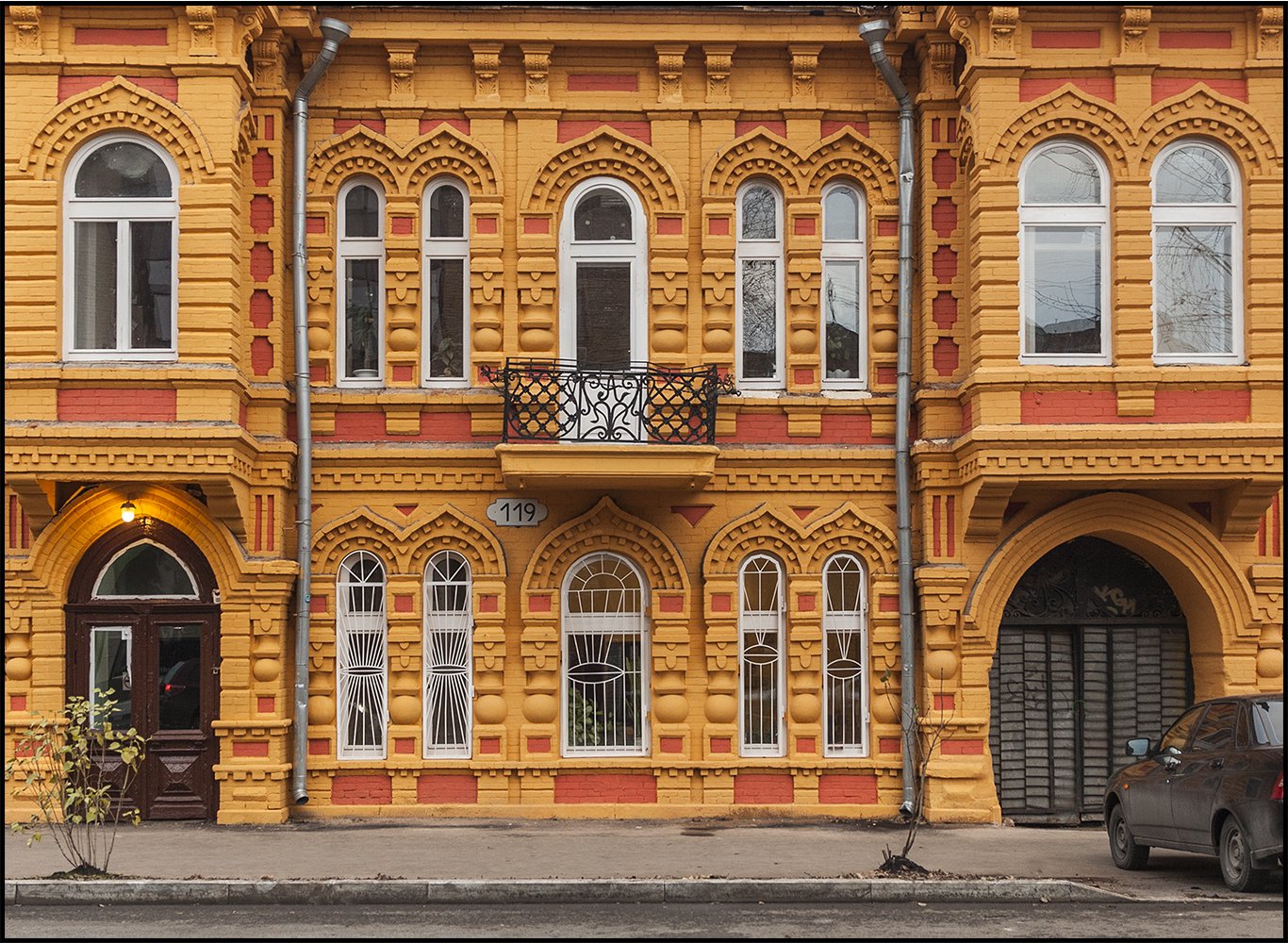#8404. Exquisite Polychrome Façade of a Historical Building with Neo-Russian Motifs
Before us stands an expressive example of historicism in architecture – a building with a richly decorated façade in the Neo-Russian style with elements of Byzantine influence. The façade is characterized by a vibrant two-color solution in a yellow-red palette, where the main volume is executed in an ochre-yellow color, with decorative elements highlighted by rich red accents.
The architectural composition of the façade is strictly symmetrical and divided into two levels. The upper floor is adorned with arched windows with characteristic pointed ogee arch completions, framed by decorative platbands and pediments. Particular attention is drawn to the central part with a small decorative balcony with wrought iron railings and house number "119". The rhythm of the façade is set by the alternation of window openings with semi-circular completion and the rich plasticity of the wall.
The lower floor features large arched openings – an entrance group on the left and a driveway arch on the right. The first-floor windows are equipped with elegant metal grilles with geometric ornaments. The façade is enriched with numerous details: decorative belts, stepped cornices, rusticated elements, and volumetric "beads" under the windows.
This façade design style demonstrates an interesting approach to the use of color and texture in architecture. For modern home building, one can borrow techniques such as contrasting two-color solutions, decorative framing of window openings, the use of symmetrical compositions, and rhythmic articulation of the façade. Of course, these elements would need to be adapted to a more restrained contemporary aesthetic.
